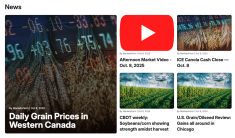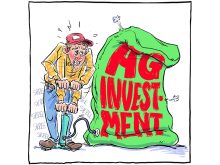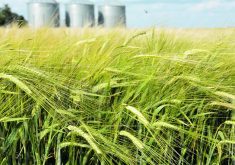Farmers sure have changed in the past 25 years.
Or have I changed in the quarter-century I’ve been covering farmers and farming for The Western Producer? Do the same things just look different to my older, more experienced and physically degraded eyes?
It’s probably a bit of both, but looking back over these 25 years of covering farmers in Manitoba, Saskatchewan, Alberta and B.C., it’s undeniable to me that farmers and farming have radically changed.
(This is the second in a series of posts looking back at how things have changed since I started working for the WP. You can find the first post here.)
Read Also

Defence investments could benefit agriculture
A bump in Canada’s NATO spending commitments could lead to infrastructure investments that would benefit rural areas
I came along when there was already a major transformation going on, but it was just in its initial stages and many of us – including most farmers – hadn’t yet figured that out. When I showed up in November 1994 (I’d already been covering farming communities for smaller newspapers in Saskatchewan and Alberta since 1992), farmers were still often seen, and often represented themselves, as part of Canada’s bedrock population. They were a segment of what we used to call “ordinary Canadians,” “the people,” or just “Canadians.” A farmer was seen as one of the common types of Canadian who populated this vast land. They were seen as the rural equivalent of blue collar working people in the cities.
And the political discussions around farmers and farming tended to play to that image. Farmers were common folk who needed to be helped when things got bad, the way urban workers were helped during recessions. That wasn’t just in terms of ad hoc disaster bailouts, but also in structures that tended to place farmers in an adversarial relationship with the rest of the agriculture industry. City-based interests like the banks, futures markets, grain companies, meat packers, railways and service providers to agriculture were often seen as and described as parasites who lived off the farmer. It wasn’t just a healthy skepticism and a wariness towards those with whom farmers had to do business, and a concern with regulation market structures to ensure competition, but sometimes an outright hostility. If any of those players did well, it was seen as evidence that the farmer was being fleeced. This was a common attitude and the tenor of many discussions I witnessed a numerous farm conferences and events in the 1990s. If anybody in ag other than the farmer made a profit, there was a problem.
But a different type of farmer was quietly assuming more and more prominence in farm country, perhaps sensing that as the farm population continued to shrink its political influence would also decline, or maybe just being motivated by a different set of ambitions. This type of farmer didn’t want collective strength to fend off business interests in agriculture, or a political system that reacted politically to disasters, but tools by which to become business interests in their own right, operating without the assumption that the government would step in next time there was a problem. They wanted farming to be a realm of independent businesses, but one in which the general interest of numerous disparate farmers could be protected by programs, legislation and regulations that allowed farmers to manage their everyday risk and address their exposure to monopolies like the railways.
It might seem to be the same thing, but I think the two outlooks were fundamentally different. One wanted farmers to achieve collective security through rigorous government regulation, and hoped to achieve farmer control of the value chain through the creation of entities like the Canadian Wheat Board, the Prairie pool elevator companies and the provincial hog marketing monopolies, while the other wanted individual farmers to be able to independently move up the value chain and assume the role of a equal partner in a mutually-beneficial chain.
In the late 1990s and through the 2000s and early 2010s, these outlooks fought for supremacy. Farmers didn’t get the final say in most of how things were resolved. Governments, for a variety of reasons, favoured the open market approach and the CWB and the hog marketing boards were thrown onto the dustbin of history. The cooperative elevator companies liquidated themselves under the pressure of debt and a collective lack of commitment of farmers. The path into the future had been chosen.
But regardless of how popular that path was, or how much many farmers might have wanted things to be otherwise, most adapted quickly to the changes. Some left the industry, seeing some ugly writing on the wall. Others embraced changes they had been clamouring for. And many just accepted the situation as it was and adapted their farming and their outlook to fit in with the new ethos.
It’s been quite a shift in tone, and it’s quite different to cover as a journalist. Most of the meetings and conferences I would cover would almost inevitably gravitate towards politically-based solutions for whatever problems the farmer was facing. Now there’s a lot more discussion about how the various players in an agricultural industry – including farmers – can address some threat, challenge or opportunity. It’s a very different feel today, one of farming as a business and an industry, not as a population and a society.
Is that a good or a bad evolution? That’s for you to decide. For me as a journalist, it’s been fascinating to cover, and I just wish I’d been more far-sighted about what was occurring so that I could have covered it better and more insightfully. But that’s the situation we’re all in, isn’t it? We’re living today with the realities we see before us and it’s only in retrospect that we realize where we were then and what we should have done.















